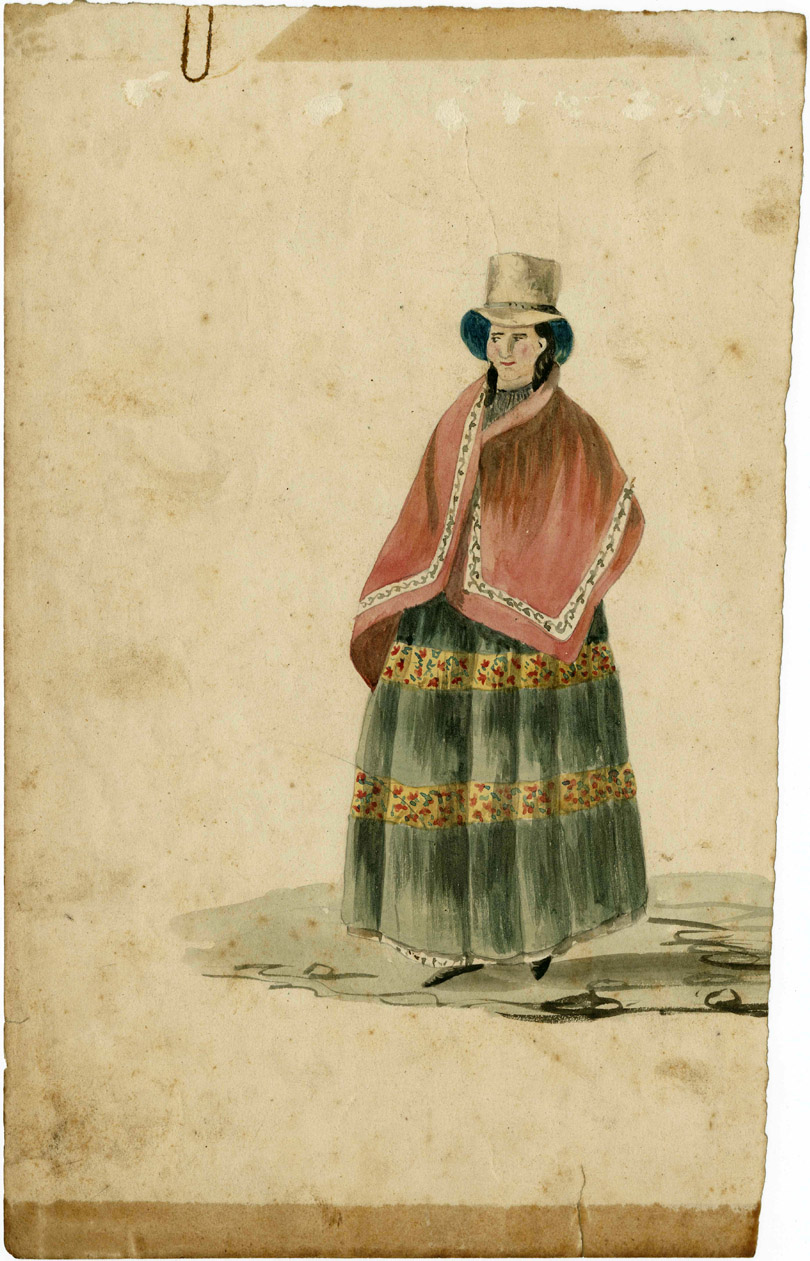Costumbrismos, ca. 1848: Unidentified [Woman with Red Shawl].
ca. 1848, watercolor.
Costumbrismos are literary and artistic depictions of the peoples in South America during the nineteenth century. Costumbrismas, such as Peruvian Pancho Fierro and French diplomat Léonce Angrand, illustrated costumes and culture of various ethnic stereotypes in pencil and watercolor that were used in travellers’ books and albums. University of Miami Art History Professor Rebecca Brienen explains its history: “With their roots in costumes books of the Renaissance, images of ethnic types, such as the 19th century drawings of men and women from the Andes in this exhibition, have a long history in Western Art. Reproduced on maps but especially in natural history publications, such images were widely circulated.” Publications include Theodor de Bry’s Grand Voyages, which chronicles early expeditions to the New World with illustrated maps and images that portray the costumes and cultures of natives. The exhibited prints belong to a collection of ten costumbrismos, eight of which contain Italian character description.
This woman is possibly a cholita, a woman of “mixed racial and cultural origins.” Cholitas often wear clothing that is a combination of Western and indigenous cultures. Florida International University Art History Professor Carol Damian explains that their dress is a “continuation of traditions that are hundreds of years old, maintained within a more modern context. Small details such as geometric patterns and abstracted floral designs pay tribute to the symbolic repertoire that once graced the costumes of their ancestors. The tiny flowers on one skirt, for example, are the nukchu lilies that were sacred to the Inka queen, the Coya, and the geometric patterns were also present on Inka tunics and other articles of clothing and perhaps were once a visual language, like glyphs.”
Italian translation by University of Miami professor Giavanna Pompele.
